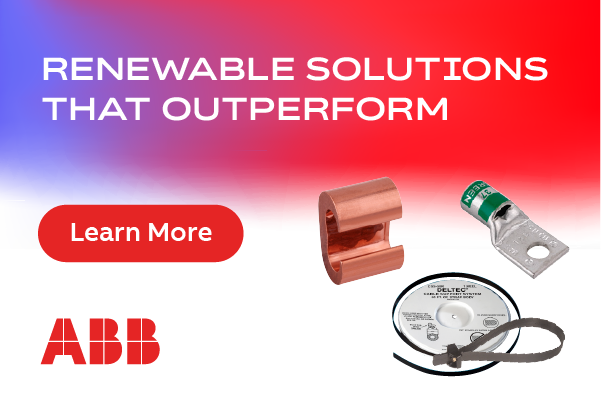DOE Co-Releases a $16.4 Million Funding Opportunity to Improve Offshore Renewable Energy Deployments
The U.S. Department of Energy’s (DOE) Office of Energy Efficiency and Renewable Energy (EERE) is issuing this Funding Opportunity Announcement (FOA) on behalf of the Wind Energy Technologies Office (WETO) and Water Power Technologies Office (WPTO), and the Department of Interior’s (DOI) Bureau of Ocean Energy Management(BOEM) and Bureau of Safety and Environmental Enforcement (BSEE). Management of the awards will also be in collaboration with the National Oceanic and Atmospheric Administration’s (NOAA) National Marine Fisheries Service.
This FOA supports accelerated and responsible development of offshore renewable energy by funding research to reduce risk and improve environmental compatibility of deployments in all regions of U.S. waters including the Atlantic Ocean, Pacific Ocean, Great Lakes, and the Gulf of Mexico. This includes research into the integrity and monitoring of mooring lines for floating offshore wind energy systems and marine energy converters, as well as reducing or avoiding noise generation and propagation during the installation of fixed-bottom offshore wind foundations.
Projects awarded under this funding opportunity will support the Biden-Harris Administration’s goals of a carbon-free electricity sector by 2035 and a net-zero-emissions economy by 2050. This funding program also supports the Administration’s goals to deploy 30 gigawatts of offshore wind energy by 2030 while protecting biodiversity and promoting ocean co-use, and to deploy 15 gigawatts of floating offshore wind energy by 2035.
Topic Areas
The FOA includes two topic areas:
Topic Area 1: Reliable Moorings for Floating Offshore Wind and Marine Energy Systems ($6.4 million, 6–8 projects)
Topic Area 2: Noise Reduction for Fixed-Bottom Offshore Wind Installation ($10 million, 3–8 projects)
Topic Area 1: Reliable Moorings for Floating Offshore Wind and Marine Energy Systems
WETO, WPTO, BSEE, and BOEM seek to improve the reliability of mooring lines for U.S. deployments of floating offshore wind and marine energy systems. This Topic Area will address specific near-term needs informing mooring system designs for floating offshore wind and marine energy.
This Topic Area includes three subtopic areas. Applications may address one or more subtopics and may focus on offshore wind energy systems, marine energy converters, or both.
- Subtopic 1a: Test Mooring Ropes for Fatigue - Physically test and characterize synthetic fiber ropes likely to be used in floating offshore wind and/or marine energy systems, including fatigue and long-term performance.
- Subtopic 1b: Robust Sensor Systems for Mooring Condition Monitoring - Advance a condition monitoring instrumentation package for mooring lines that will lower operations and maintenance costs for floating offshore wind and/or marine energy converters.
- Subtopic 1c: Validate Shared Anchor / Shared Mooring Array Configurations - Physically test and validate shared anchor and/or shared mooring configurations of floating offshore wind energy arrays or marine energy arrays.
Topic Area 2: Noise Reduction for Fixed-Bottom Offshore Wind Energy Installation
As offshore wind energy deployment expands, both DOE and DOI recognize the value of additional technologies and strategies to reduce the noise associated with installation of fixed-bottom turbine foundations.
Noise impacts can be mitigated by reducing the amount of noise generated and/or reducing the amount of noise propagated. As this is a rapidly evolving area of research and development, it is important to disseminate up-to-date information on the technologies and techniques available and provide best practice guidelines where possible.
This Topic Area includes three subtopics.
- Subtopic 2a: Alternative, Quieter Foundation Types or Installation Methods – Assess the feasibility of one type of alternative foundation (e.g., suction buckets, gravity bases) or installation method (e.g., vibratory) that makes the installation of foundations significantly quieter than using impact piling and/or complete comprehensive noise measurements around the site of an alternative foundation or installation method deployment.
- Subtopic 2b: Noise Abatement Technologies – Demonstrate the effectiveness of noise abatement technologies covering the full range of relevant sound frequencies in a range of environments.
- Subtopic 2c: Data Sharing and Information Synthesis – Synthesize existing information on foundation types, installation techniques, and noise abatement technologies, including where and under what conditions these can be deployed, and use this information to host workshops and publish best practices to ensure the best technologies are used for the appropriate environments and conditions in U.S. waters.
The National Oil Spill Response and Renewable Energy Test Facility (Ohmsett) is available for projects in both Topic Areas and is planned to be a dedicated testing venue based upon awardee interest.
Who Can Apply
DOE and agency partners seek diverse teams of experts, researchers, and technology developers to apply for this funding. See the full FOA for specific eligibility requirements.
Key Dates
| FOA Issue Date: | Sept. 29, 2023 |
| Submission Deadline for Concept Papers: | Nov, 9, 2023, at 5 p.m. ET |
| Submission Deadline for Full Applications: | Feb. 29, 2024, at 5 p.m. ET |
| Expected Date for DOE Selection Notifications: | July 2024 |
| Expected Timeframe for Award Negotiations: | July–September 2024 |
DOE | www.energy.gov








